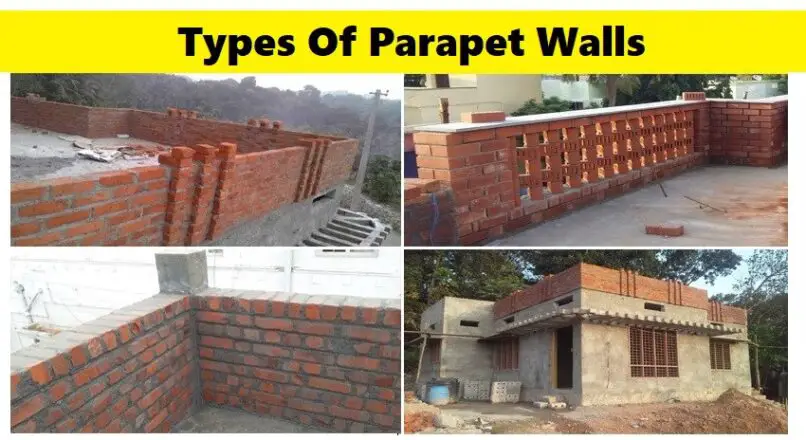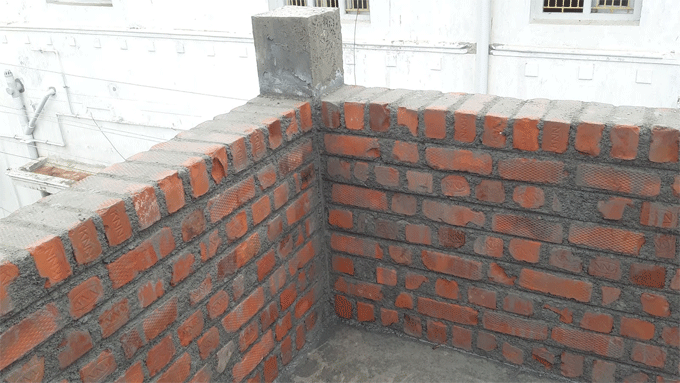What Is Parapet Walls? | Importance and Uses of Parapet Walls | Types of Parapet Walls
What Is Parapet Walls? | Importance and Uses of Parapet Walls | Types of Parapet Walls
What Is Parapet Wall?
Parapet walls are short and small walls constructed at the edges of a building’s roof, mostly around its perimeter. Parapet walls can be done in the form of a balustrade or other design shapes. Parapets walls can also be found in bridges, houses, walkways, and balconies. They are constructed from brick masonry, stone masonry, stainless steel, GI pipes, fiberglass, Aluminium or concrete,
Importance and Uses of Parapet walls
Parapet walls are not the same as the typical walls in a house because they are highly exposed to most sides’ environment. Consequently, parapet walls are subjected to rain, sunlight, pollution, snow, dust, and maybe chemicals compared to a conventional wall. Parapet walls, therefore, demands to be specifically stronger and durable than an ordinary wall.
Parapet walls for Safety
The parapet wall provides Safety for movement. The walls can prevent any accidents due to falling off at the edges of the house. A parapet wall for your roof also acts as a good barrier for safety measures. However, it should be noted that the wall must be a certain height to accomplish this. Smaller walls may act as a reminder that the edge of the roof is near but doesn’t offer protection.
Parapet walls for Space Utilization
The parapet wall allows the homeowner to utilize the space in the roof or balconies, therefore, increases the utility area of a structure.
Parapet walls for Aesthetics
These walls add beauty to a building. A parapet wall acts as an architectural element that enhances the view of the building. Modern houses often use parapets made of glass to boost the elevation of a building.
There are many different parapet wall styles, many of them used mainly for aesthetic purposes. For example, perforated parapet walls are pierced using designs like trefoils or circles.
Parapet walls Acts as Privacy barrier
A parapet wall can also act as a privacy barrier, thus ensuring the privacy of space because it can block the by-passers view of unpleasant equipment and tools like pumps, which are usually kept in the terrace, thus improving the aesthetics of the building.
Parapet walls Tackles wind
When Parapet walls are provided in the building, it acts as the wind forces hence reduce pressure from the wind to the building’s edges.
Parapet walls Prevent fire from spreading: Parapet wall acts as a firewall during fires breakouts, preventing the fire from spreading because the walls will serve as a fire blockade.
Parapet walls also Provide a clean facade.
The parapet wall prevents the debris or dust that accumulates on the roof to fall. This, therefore, prevents staining and improves the sight of the façade of the building.
Types of parapet walls
- Plain Parapet Walls
- Perforated Parapet Walls
- Embroidered Parapet Walls
- Paneled Parapet Walls
- Sloping parapet wall
- Stepped parapet wall
- Flat parapet wall
- Curved parapet wall
Plain parapet walls
The plain parapet wall is just a vertical extension of the wall at the edge of the roof. A plain parapet is quite common for safety concerns. Plain parapets are easy to build and require very little maintenance.
Perforated Parapet Walls
The perforated parapet walls are also just extensions of the plain parapet-like wall; however, the portion of the expanded wall is perforated with shaped design openings that give the aesthetic appearance of the wall. These designs can be holes are used, such as trefoils, circles, and flower shapes.
Embroidered Parapet Walls or Complicated parapet walls
Embroidered parapets were commonly used in the old days, especially for palaces, for example. Low and high parts and perforations could be constructed in the parapet. Traditionally, arrow shooters could use these holes to wield arrows through it, protecting the castle.
Because of their beautiful uniqueness and appearance, embroidered parapets are nowadays constructed to enhance the building’s aesthetic aspects.
Paneled Parapet Walls
Paneled parapet walls are similar to plain parapets; however, they have differential paneled parapets that are ornate with a series of panel designs outside the parapet wall.
These Panels can be square or diagonally, but in this case, no perforation is provided.
This type of parapet is more common as it gives the building a beautiful appearance, and again it is not costly to construct.
Sloped Parapet Wall
Sloping parapet walls are constructed for sloping roof designs such as industrial buildings and trussed structures.
Stepped Parapet Wall
Stepped parapet walls are also commonly used for inclined roof buildings. In the case of stepped parapets, the wall is constructed in a staircase type design.
Flat Parapet Wall
Flat parapet walls are usually done and recommended for flat roof buildings.
Curved Parapet Wall
Curved parapet walls are also called arched parapet walls and are used for both inclined roofs and flat roofs.


